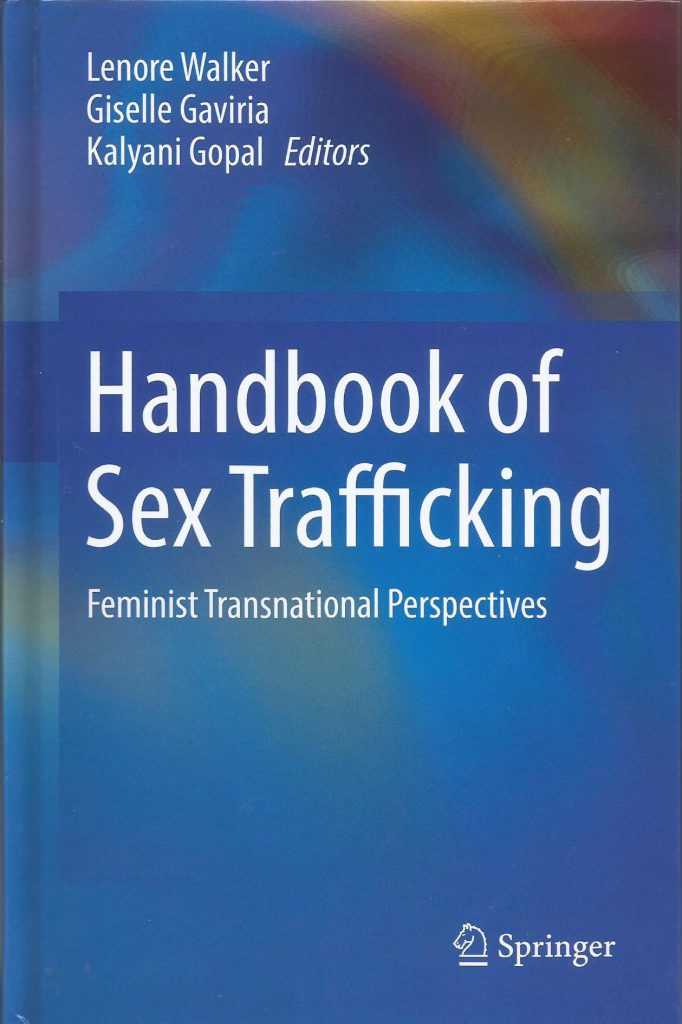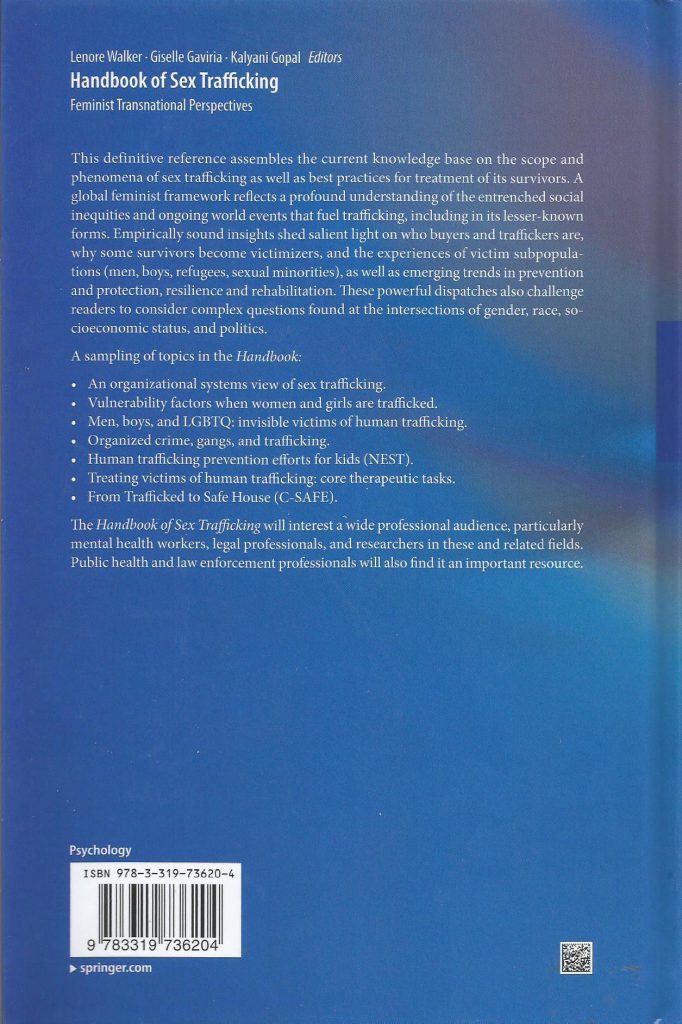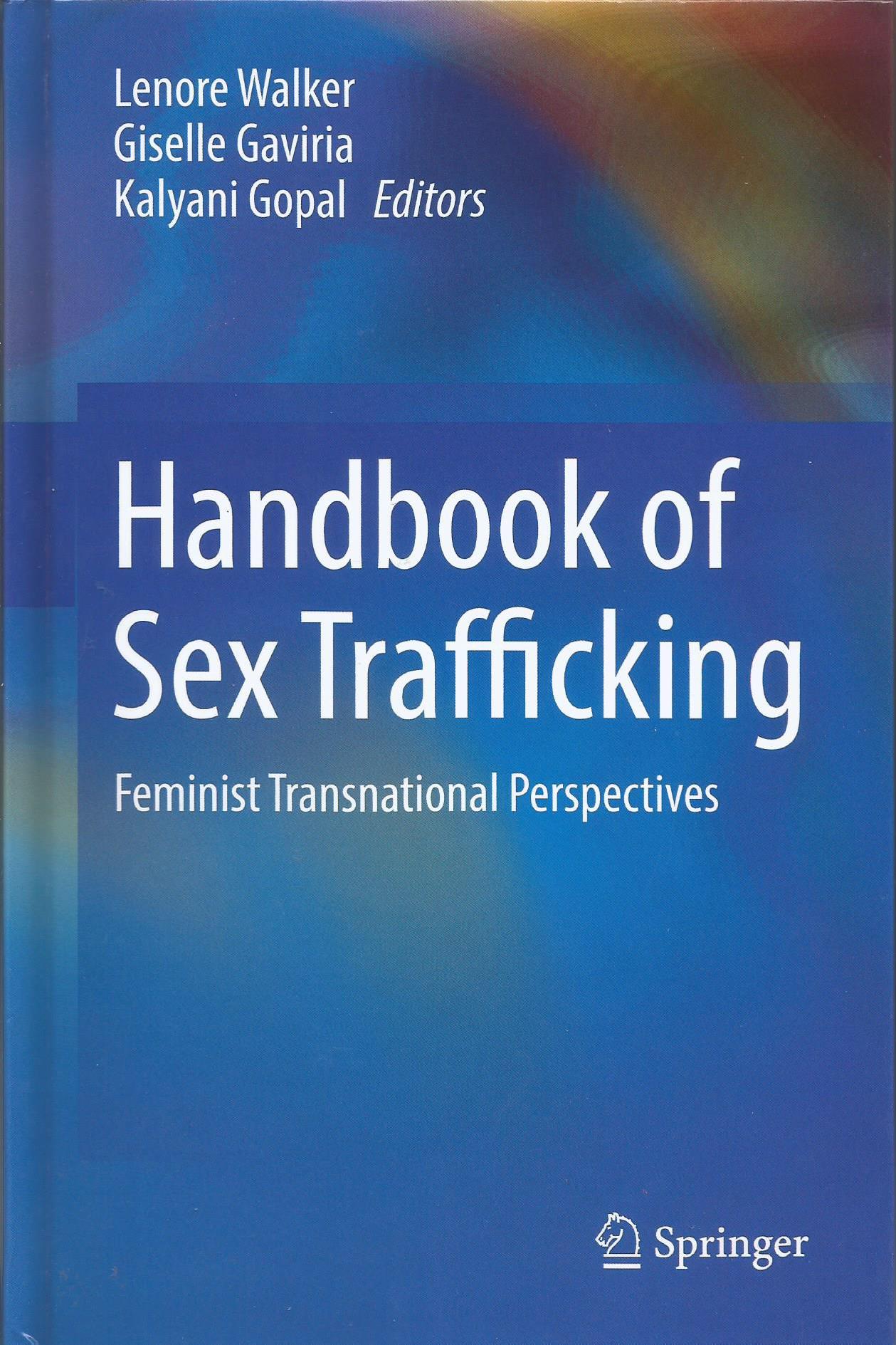Walker, L. E., Gaviria, G., & Gopal, K. (2018). Handbook of sex trafficking: Feminist transnational perspectives. Cham, Switzerland: Springer.
Unaccompanied Refugee Children in Greece: Assessments, Trauma, Sexual Exploitation and the Shattering of Identity pp.93-96
Abstract
It is estimated now that over 20,000 unaccompanied refugee children mainly from Syria, (ages 10–16) are in ‘Hot-spots’ in many areas in Greece, waiting for asylum to transfer to other European countries.
Children migrate for many reasons. Some are asylum seekers fleeing war, gangs, or persecution in their home countries, while others are victims of sex trafficking or slavery. Children may also migrate in search of economic opportunities, to join parents or relatives already living in the destination country, or to flee abusive situations in their home countries.
Unaccompanied children may arrive clandestinely, hidden by traffickers or paid smugglers, or they may attempt to migrate through normal immigration checkpoints. They may present false documents to border officials, or arrive in desperation with no documents at all. They may be apprehended while trying to enter the destination country, or evade border patrols altogether.
The presentation will explore the attachment and the impact of drama of unaccompanied refugee’s children and their exposure to sexual exploitation.
Antonopoulou C. (2018) Unaccompanied Refugee Children in Greece: Assessments, Trauma, Sexual Exploitation and the Shattering of Identity. In: Walker L., Gaviria G., Gopal K. (eds) Handbook of Sex Trafficking. Springer, Cham
- First Online 25 December 2018
- DOI https://doi.org/10.1007/978-3-319-73621-1_10
- Publisher Name Springer, Cham
- Print ISBN 978-3-319-73620-4
- Online ISBN 978-3-319-73621-1
- eBook Packages Behavioral Science and Psychology
Family Members and Trafficking: Story of Alex’s Disappearance pp.117-120
Abstract
Alex Meschisvili, 11, disappeared in February 2006. Despite the intensive police search, his body has never been found. Five boys accused of murder originally told police in June that they beat Alex to death. Despite the charges, there remains no sign of the missing boy’s body.
It was cold that day. After the beating, Alex was motionless. Was he dead or alive? They weren’t sure. So they put him in a deserted house (across the Apollo Club). Two days later, they said they got rid of the body. This was the first scenario supported by an “autopsy without a body” that was given by the State Coroner:
from the continuous pursuit and having ran a great distance and even though he tried to deflect the attack which resulted to injuries on his upper limbs, bruising, cuts on the face and skull; because of the vicious blows and pushing, lost his balance and fell violently on the steps from a height of 2 m.
As a result of his fall he sustained additional head injuries on the back and lower region of his skull, including brain hematomas, brain bruising and hemorrhaging.
His death was a result of all the above injuries. (Report of the Coroner)
But, the coroner was wrong. The death of the investigation happened, not the death of Alex, because it was never proved that Alex was killed by the five boys.
Although the official investigation stopped with the coroner’s report, it actually continues, and its objective is the search of truth concerning the trafficking of children that it has uncovered. Unfortunately in the case of Alex, the truth was sacrificed to cover “the political correctness,” too much politics and not enough policing.
Antonopoulou C. (2018) Family Members and Trafficking: Story of Alex’s Disappearance. In: Walker L., Gaviria G., Gopal K. (eds) Handbook of Sex Trafficking. Springer, Cham
- First Online25 December 2018
- DOIhttps://doi.org/10.1007/978-3-319-73621-1_13
- Publisher NameSpringer, Cham
- Print ISBN978-3-319-73620-4
- Online ISBN978-3-319-73621-1
- eBook Packages Behavioral Science and Psychology
Symptoms of Post-traumatic Stress Disorder in Victims of Trafficking pp.273-286
Abstract
Background: Recently studies have emerged that examine various traumatized populations, which have shed light on the course of post-traumatic stress disorder (PTSD). The differences in the symptomatology of PTSD between “at-risk” populations must be understood, so that people are not misdiagnosed and therapeutic interventions are tailored to each group. The purpose of this study was to examine the symptoms of PTSD in victims of trafficking, an under-researched population, and to establish how their symptoms differ from those experienced by other victims of abuse and by females in the general population of Greece.
Results: Significant differences were found between the females from the general population, the abused women, and the victims of trafficking on the TSI and BBTS. The abused women’s mean scores on the TSI were significantly higher than the scores of the non-abused women. However, the victims of trafficking demonstrated a unique presentation of trauma symptoms. The victims of trafficking also responded significantly different on the BBTS than the other abused women.
Conclusions: Our results suggest that victims of trafficking are a group of abused women who are at higher risk for developing PTSD. Not only have these women’s symptoms met the DSM-V-TR criteria for PTSD, but they also display additional pathology. It is necessary to be aware of the varieties of PTSD symptoms and to practice a treatment modality that is sensitive to this group’s specific situation.
Antonopoulou C. (2018) Symptoms of Post-traumatic Stress Disorder in Victims of Trafficking. In: Walker L., Gaviria G., Gopal K. (eds) Handbook of Sex Trafficking. Springer, Cham
- First Online25 December 2018
- DOIhttps://doi.org/10.1007/978-3-319-73621-1_31
- Publisher NameSpringer, Cham
- Print ISBN978-3-319-73620-4
- Online ISBN978-3-319-73621-1
- eBook Packages Behavioral Science and Psychology


